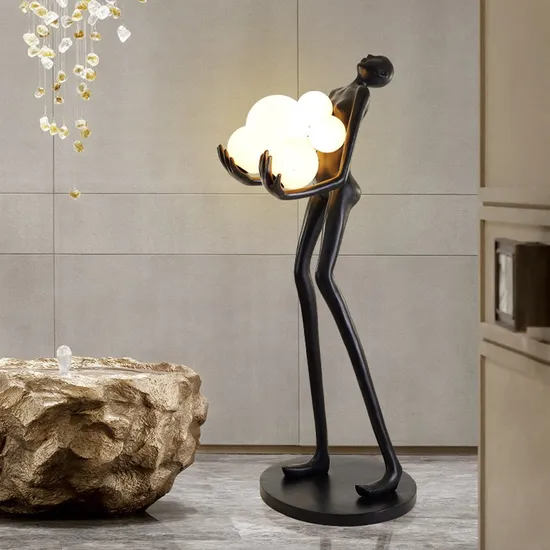The Pulitzer Arts Foundation Hotel: A Copenhagen Architect's Midwest Muse

Stepping into The Pulitzer after a day navigating the St. Louis city grid is akin to muting the world. The auditory chaos simply evaporates. As an architect and designer from Copenhagen, I'm accustomed to spaces that prioritize both form and function, but The Pulitzer takes this concept to another level. My recent two-night stay, an extension of a conference in Chicago intended for some architectural exploration in the Midwest, proved to be a deeply restorative and inspiring experience. It's more than just a hotel; it's a carefully curated sensory experience.
Grand Center's Quiet Revolution
Located in the heart of St. Louis' Grand Center Arts District, The Pulitzer is surrounded by a vibrant cultural landscape. Theaters buzz with activity, galleries beckon with captivating displays, and the imposing Brutalist facade of the Contemporary Art Museum St. Louis sits just a block away. The area possesses a raw, urban beauty – glimpses of reclaimed brick buildings, repurposed industrial spaces, and the sun-bleached graffiti decorating a fire escape on the adjacent building, a view I enjoyed from my window. This gritty context is juxtaposed so brilliantly with the hotel’s incredibly refined interior, creating a dynamic tension that truly piqued my interest.
Stay-as-Inspiration: An Investment in Design
At $400 a night, The Pulitzer isn't just a hotel room; it's a living, breathing design seminar. Think of it this way: the cost is comparable to a weekend workshop at the Bauhaus Archiv. Instead of a lecture hall, you get a meticulously designed space that constantly whispers inspiration. It's an investment in experiencing art and design firsthand, and for a creative professional, that investment is invaluable.
Curated Comfort: Amenities with Artistic Intent
The amenities at The Pulitzer aren’t just about luxury; they’re thoughtfully curated to enhance the artistic experience. The hotel's art collection is central to the experience. Richard Serra's imposing steel plate sculpture dominates the lobby, a 12-foot testament to the power of simplicity and scale.

The way the light interacts with its rusted surface is mesmerizing, changing throughout the day.
Inside the room, the attention to detail is equally impressive. The custom-designed walnut desk, crafted by local artisan Thomas Hayes, is a study in clean lines and elegant simplicity. A single, perfectly placed dovetail joint speaks volumes about the craftsmanship and dedication to quality. Even the coffee, a collaboration with Blueprint Coffee, is an experience in itself. Their single-origin Ethiopian Yirgacheffe blend offered bright, citrusy notes that were the perfect start to my day.
Beyond the Visual: A Sensory Symphony
The Pulitzer’s design transcends mere aesthetics. The deliberate acoustics in the minimalist rooms are engineered to minimize echo and outside noise, creating a profound sense of tranquility. It's almost a sensory deprivation tank for the creatively overstimulated. The subtle scent of beeswax, used to polish the concrete floors, adds a layer of warmth to the austere surfaces. The tactile experience is equally important: the cool smoothness of the polished concrete, the rough texture of the exposed brick, and the soft feel of the Belgian linen curtains all contribute to a holistic sensory experience.
Turndown Touches: A Personal Connection
The turndown service at The Pulitzer is far from standard. Instead of a predictable chocolate, I found a small, hand-carved wooden sculpture of a bird on my pillow, created by local artist Maya Patel.

A handwritten card accompanied the bird, discussing Patel’s inspiration drawn from the city’s avian inhabitants and their resilience. The small bird, no larger than my thumb, felt like a tiny, tangible piece of St. Louis soul.
The Courtyard: An Instagrammable Oasis of Light and Shadow
The courtyard at The Pulitzer is, without a doubt, the ultimate "Instagrammable" spot. The play of light and shadow on the concrete walls creates a backdrop reminiscent of a Donald Judd minimalist art installation. The light transforms throughout the day, but it's the golden hour (5-6 PM) when the setting sun casts long, dramatic shadows, emphasizing the angular forms of the architecture, that is truly magical. The courtyard at golden hour is a study in light and form, an invitation to pause, breathe, and simply see. This light encourages slow observation and reflection, a vital practice in a field as fast-paced as design.
Living Art: An Invitation to Creativity
The Pulitzer Arts Foundation Hotel isn't just a place to rest your head; it's a catalyst for creativity. It's a place where art isn't just displayed but lived in, inspiring reflection and innovation. It’s a reminder that good design should engage all the senses and tell a story. My stay at The Pulitzer was more than just a trip; it was a revitalizing immersion into the world of art and design, leaving me refreshed and ready to tackle my next project.
Discover more hotels that inspire at Vistalocation.com.